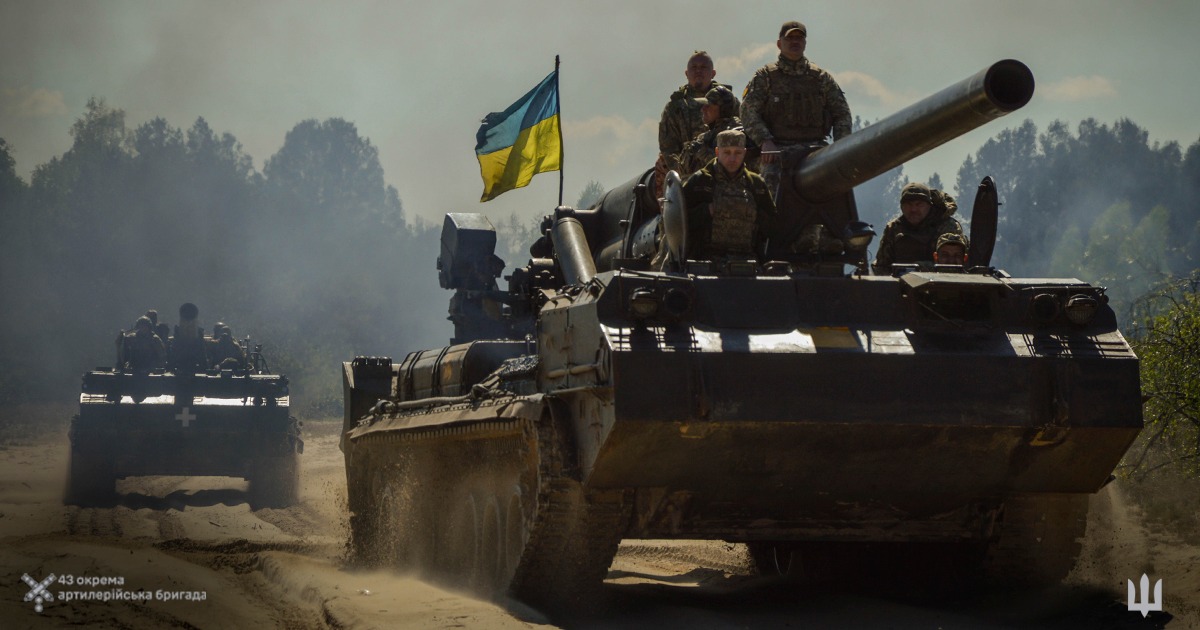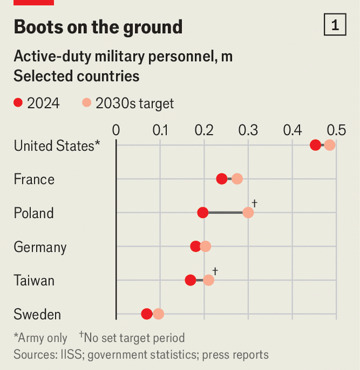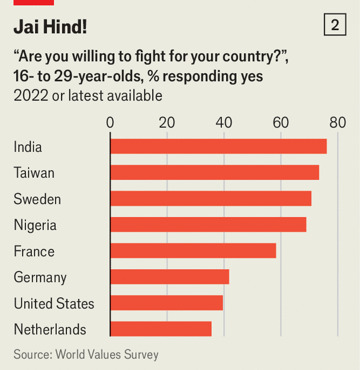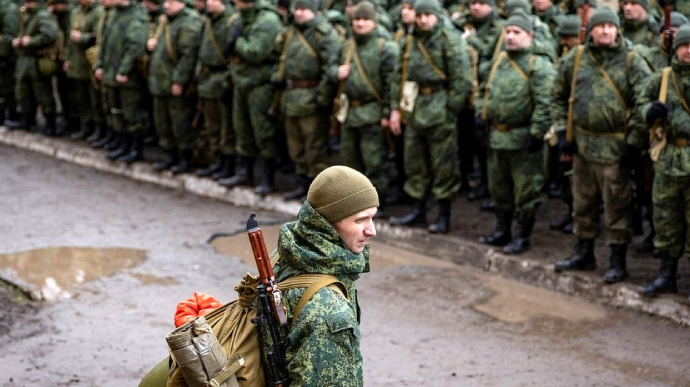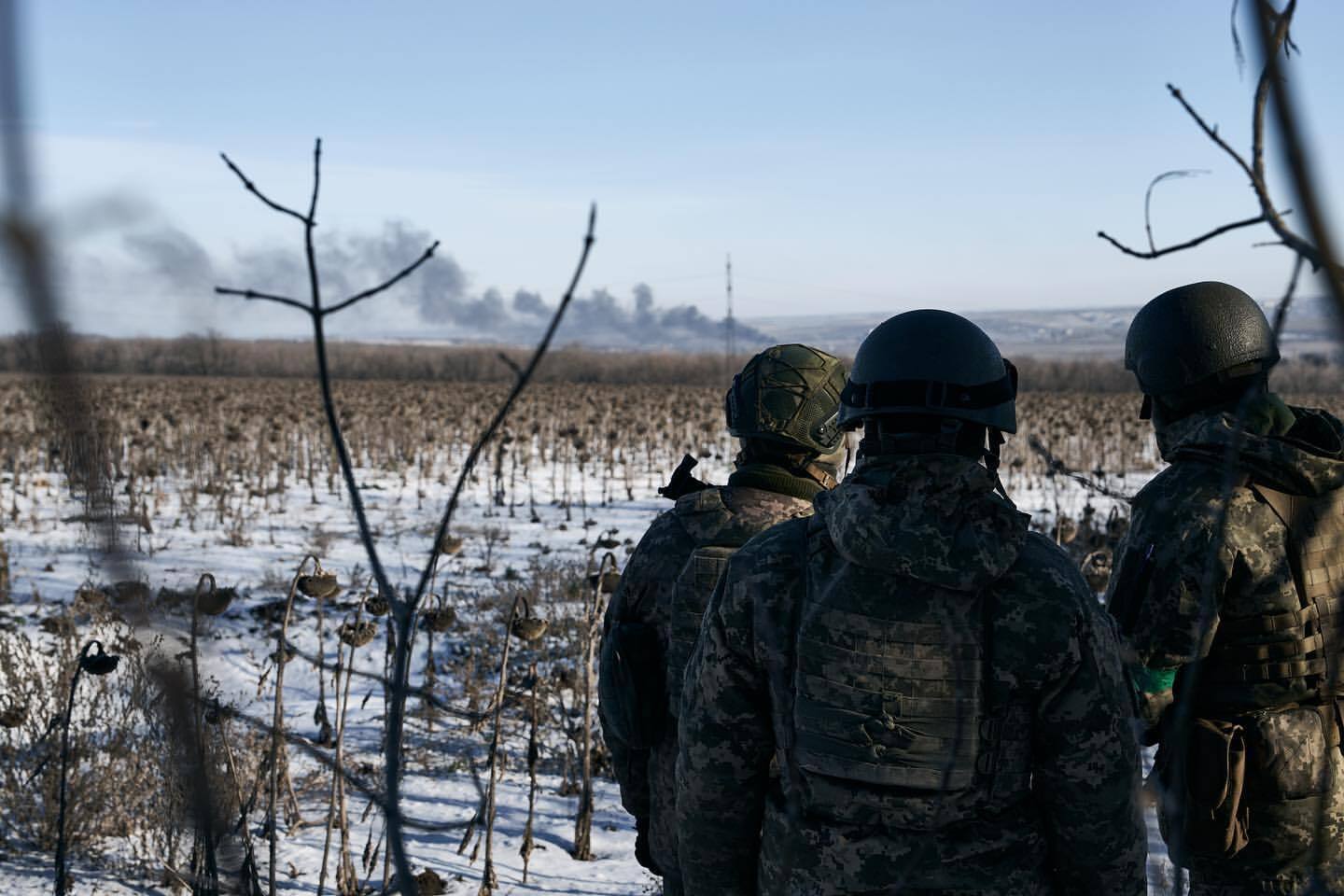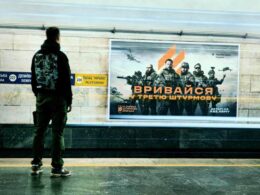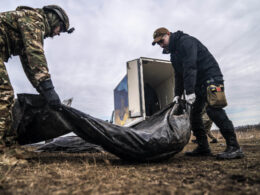In the aftermath of the Ukrainian summer 2023 offensive, which failed to yield the desired results despite the firm dedication of the Ukrainian Army, there has been virtually no public discussion about Ukraine’s future optimal strategy in the war against Russia.
As Sir Lawrence Freedman states in his book - Modern Warfare: Lessons from Ukraine: “The challenge for a strategy in the course of war is to balance ends and means, where both may change in the course of the war itself.”
This public conceptual vacuum poses a dangerous two-fold threat.
- the lack of a strategic vision jeopardizes two crucial consensuses: an internal Ukrainian consensus on the necessity of persevering in the fight to strengthen Ukraine’s negotiating position and the external consensus among Ukraine's allies on the need to assist it in exercising its inherent right to self-defense.
- the absence of clarity and at least internal agreement on the triangle of “goals, resources, and means of achieving goals” creates a fertile environment for various Russian influence operations aimed at eroding the aforementioned consensuses.
Ukraine’s partners have also hinted at this deficiency in strategic vision. While not intended to be exhaustive, these reflections serve as an attempt to stimulate public discussion on this critical issue.
Ukraine's future Grand National Strategy
This article outlines the key strategic aspects of the current confrontation, which are necessary to develop a comprehensive strategy. Among the key tasks that Ukraine’s future strategy should address are:
- Inflicting a sufficient level of damage to enemy troops and the overall capacity of the Russian Federation to generate, sustain, and deploy relevant military forces in order to secure, at the very least, a sustainable 5-7-year ceasefire, remains the priority task. During this respite, a comprehensive qualitative enhancement of the Ukrainian Defense Forces must take place, achieving a strong deterrent effect. The maximum task, however, extends beyond the cessation of hostilities - to stimulate a sweeping post-imperial transition within the Russian Federation itself through a comprehensive blend of military and non-military influence.
- Preserving Ukraine’s functional statehood across territories currently under Russian occupation is paramount. This imperative must withstand the active onslaught of combined Russian missile and drone strikes systematically targeting critical infrastructure and lifeline facilities in a concerted effort to undermine Ukraine’s resilience.
- Safeguarding domestic unity and preventing social upheaval remain a key objective in the war against Russia.
- While pursuing the aforementioned task 1, Ukraine must simultaneously strive to preserve its demographic potential to the maximum feasible extent.
It is within the framework of these tasks that Ukraine’s Grand National Strategy for the future must take shape.
Russia has learned to adapt. While currently lacking the military potential to swiftly achieve maximalist objectives on the battlefield, it has demonstrated a capacity to sustain an appropriately intense level of hostilities along the frontlines stretching from northeastern Kupiansk to south-Ukrainian Kherson. Despite monthly casualties of 17,000 killed and wounded troops, Russia has gradually increased its forces from 420,000 to 510,000, underscoring a comprehensive strategy aimed at depleting Ukraine’s resources and resolve.
In terms of ideology, Russia has also undergone a significant shift from the initial confusion of the early months of the full-scale invasion of February 2022. It has consolidated the thesis that the current confrontation is of an existential nature, casting Ukraine as a tool in the hands of the West to inflict a “strategic defeat” on Russia.
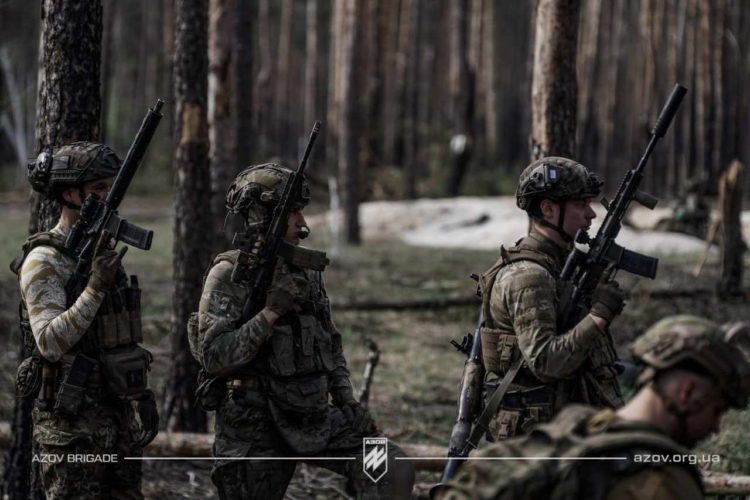
Decoding the dynamics of the ongoing war
One of the key tasks confronting any military and political leadership is to grasp the nuances of the ongoing war at the tactical and operational levels, which must subsequently be incorporated into the nation’s overall strategy.
In current Ukraine-Russia war, the battlefield is becoming increasingly transparent, aka visible, particularly within a depth of 10-15 km from the contact line. Additionally, there has been an increased proliferation of weapons systems that are integrated with intelligence assets, forming ground- and air-based reconnaissance-firing and reconnaissance-strike complexes.
However, as both Ukraine and Russia have access to these pivotal technologies, the result is a confrontation that echoes the stalemate of the Western Front during 1915-1917, where the frontlines inched forward at a very slow pace despite the phenomenal efforts exerted by both sides.
Various reconnaissance-firing/reconnaissance-strike systems on both sides, coupled with the inability to establish and exploit air dominance, have made it easier to detect and neutralize concentrations of forces than to quietly amass and employ the necessary forces - a critical prerequisite for successful offensive operations.
This dynamic favored Ukraine from February to September 2022, when the key tasks were to wear down the enemy within the framework of strategic defense and create the preconditions for future offensive actions.
However, when the Ukrainian Defense Forces began conducting offensive operations in the summer of 2023, this dynamic began to work against Ukraine’s interests.
It was not until November 2023 that the then Chief of the Armed Forces of Ukraine, Valerii Zaluzhnyi, noted the peculiarities of the present war at the tactical and operational levels, which grant an advantage to defensive operations over offensive maneuvers, while underscoring the challenges faced by the party attempting to conduct offensive actions.
However, it is not guaranteed that defensive operations will necessarily dominate offensive actions throughout this war.
Ukraine’s ability to maintain a solid frontline and ensure the appropriate balance of attrition hinges on the systematic supply of air and missile defense systems with ammunition - both to meet the nation’s needs and to fortify the protection of ground forces, as well as ammunition for cannon and rocket artillery, cruise missiles, and short-range ballistic missiles.
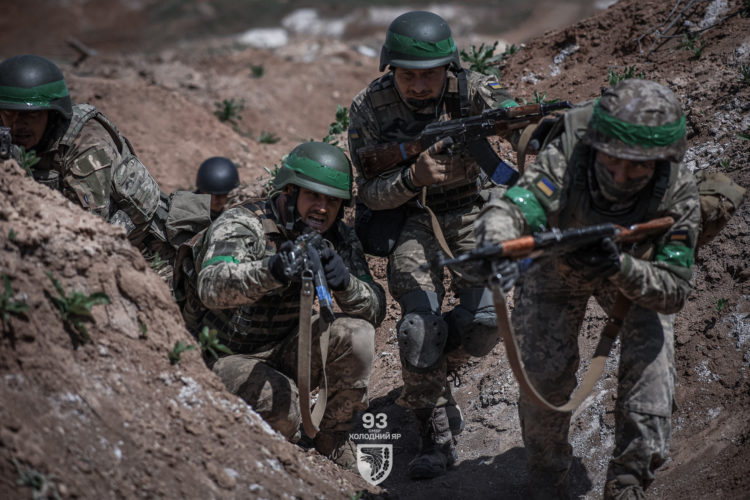
The frontline could erode if the supplies are not secured. In fact, Russia's capture of Avdiivka in April 2024 serves as a warning of what could happen along the entire frontline if the weapons are not systematically delivered to Ukraine throughout six months.
The hostilities of 2022-2023 showed that the battlefield will be defined by four clusters of capabilities, if manned aviation capacities are relatively equal:
- reconnaissance and attack UAVs of various types;
- cannon and rocket artillery together with ammunition;
- air and missile defense systems;
- electronic warfare and electronic signal intelligence.
It is the effective fusion of relevant systems and appropriate engineering support that renders defense truly active and sustainable, ensuring the proper balance of knockout power. Likewise, the integration of these systems should create good conditions for successful offensive operations in the event of attaining at least localized reconaissance and fire dominance.
However, achieving such a state of unified capabilities is a challenge, requiring synchronization and amplification in the deployment of these systems, and it is a matter of the distant future.
Ukraine's optimal future military strategy
The balance between immediate political imperatives, available military potential, and the capacity to leverage it effectively lies at the core of any military strategy.
Ukraine's successful defense between February and October 2022 are a good example of Ukraine striking the right strategic balance. Not only did it stabilize the frontlines, it also launched successful offensives in Ukraine's northeast and the right bank of Kherson Oblast.
Meanwhile, Ukraine’s attempted offensive in the summer of 2023 serves as an example of what happens when political and military imperatives are not in balance.
Ukraine and its Western partners must accept the fact that in the present situation, expecting solely on rapid maneuvers and the annihilation of enemy troops during an offensive operation without proper support will lead to the opposite of the desired outcome. This refers not only to the significant loss of personnel and equipment along the frontlines without achieving the ultimate strategic objectives but also to growing apathy and despondency - both within Ukraine and abroad - due to the inability to deliver results commensurate with expectations.
Ukraine’s 2023 counteroffensive and the strategic zugzwang of Western expectations
Regrettably, it was not until after the summer campaign of 2023 that Ukraine and its partners arrived at this realization. In practical terms, this awareness should translate into an active defense posture over the next year and a half aimed at stabilizing the frontlines and ensuring a favorable balance of attrition.
In the coming year and a half, Ukraine needs to organize active defense operations and accumulate resources.
Ukraine will have the bare minimal technical basis thanks to the US' belated aid package and Europe's intensified efforts to assist Ukraine.
At the same time, operational defense does not demand the same skills for synchronization and scale as offensive operations. This correlates with the political imperative of ensuring that Russian forces are unable to advance here and now, thereby denying them an opportunity to reinforce their negotiating position.
After all, the Russian political leadership currently assumes that it is capable of conducting successful offensive actions, which reduces its willingness to engage in negotiations.
The Russian political leadership assumes that it is capable of conducting successful offensive actions
At the tactical level, active defense operations necessitate more than just long-range firepower to neutralize enemy concentrations of forces and equipment at maximum depth in the event of such force amassments.
This concept encompasses three lines of defense - front, main, and reserve - which enable the gradual depletion of the enemy through an exchange of space for time while facilitating the restoration of the frontline through counterattacks by reserves brought in from the depths.
High-quality elastic defense requires not only proper engineering support for defensive operations but also personnel training at both the tactical and operational-tactical levels.
Trending Now
“Do not despair.” Ex-minister Zagorodnyuk on lessons from Ukraine’s counteroffensive
Of course, an active defensive position alone does not automatically resolve the issue of liberating the temporarily occupied territories and restoring Ukraine’s territorial integrity - a goal that remains the principle of Ukraine’s policy if official statements are to be taken at face value.
Rather, the task for the next year and a half should be to methodically create the conditions necessary for revisiting this issue in the future. However, here and now, active defense represents the only possible scenario in the current landscape.
Simultaneously, this approach does not restrict Ukraine from executing a comprehensive set of measures aimed at destroying Russian military infrastructure in temporarily occupied Crimea, further guaranteeing freedom of navigation in the Black Sea and undermining the rear echelons of the Russian forces in mainland southern Ukraine.
Similarly, active defense along the frontlines does not prevent the transfer of hostilities to Russian territory itself, with the explicit objective of undermining Russia’s ability to generate, sustain, and deploy its multi-service force groupings in the broad and narrow sense.
In practical terms, this entails strikes targeting refineries, defense industry installations, and logistical nodes. Moreover, these strikes should create an ever-increasing spectrum of dilemmas for the Russian air defense system, forcing it to prioritize between meeting the needs of the multi-service force grouping or safeguarding critical national infrastructure.
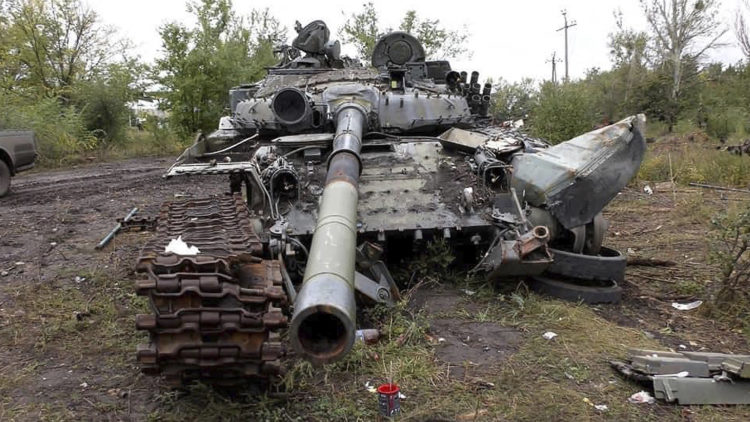
Ukraine's challenge to navigate risks and threats
Any viable strategy must be firmly rooted in an understanding of the risks and threats. These comprise a number of external and internal factors capable of undermining the execution of the chosen approach.
a) Ukraine must reframe expectations of success
Firstly, operating within the modern information age necessitates constant engagement with target audiences that expect positive outcomes. Maintaining the focus of the international community demands a steady stream of success stories from the frontlines. Yet, this reality poses certain challenges.
On the one hand, rapidly liberating territories and defeating large enemy force groups are classic examples of successful frontline actions and indicators of success within the annihilation strategy paradigm. Ukraine cannot present its audience with such results while it is conducting an active defense.
Consequently, Ukraine will need to reframe what its success looks like in interacting with Western governments, think tanks, and media. It should not only be about stabilizing the frontline or ensuring a favorable balance between fighting back and keeping the country functioning in the controlled territories. The focus for wider audiences should be on deep strikes targeting military objectives in occupied Crimea and Russian territory, destroying crucial enemy military elements like aircraft, ships, surface-to-air missile systems, and radars.
On the other hand, Ukraine's desire to have only positive coverage of the war in international media, without naming issues and weaknesses in Ukraine’s actions, leads to waning interest from the international community.
Ukraine must strike a difficult balance in war coverage, keeping two points in mind: the importance of maintaining focus on the confrontation with Russia and the need to raise problems in order to solve them.
b) Ukraine must maintain the minimalist consensus of allies
Securing enough resources from Ukraine's international partners to maintain the minimalist consensus that “Russia must not win and Ukraine must not lose” is another challenge. As the past seven months have shown, raising resources merely to stabilize the frontline may become increasingly difficult.
Skeptics of further assistance can argue, “We want a clear vision leading to victory (at least in the form of defeating the Russian forces and liberating lost territories), not just maintaining the frontline.” This issue requires a separate approach.
It is clear that the aforementioned minimalist consensus does not allow to realistically plan to liberate the temporarily lost territories.
For a number of reasons, Ukraine’s partners, led by the United States, avoid defining Ukraine's victory as defeating Russian forces on the battlefield and liberating all lost territories. Instead, they believe victory will be preserving Ukrainian statehood in the territories under its control. Ukraine will continue working to change this framework, but it must take the current stance into account.
c) Ukraine needs a new social contract for ensuring mobilization
Domestically, the challenge of properly managing all available limited resources remains unchanged, primarily balancing the task of holding the frontline and maintaining the state’s normal functioning.
Improving the troop training system, battlefield management, and ensuring at least more active unit rotation, along with receiving the minimum necessary material assistance from partners, should form the basis for attracting new recruits to Armed Forces of Ukraine.
At the same time, Ukraine's mobilization problem illustrates the deep gap between the dominant postmodern liberal system of values based on individual comfort, in which military service as a career is unnatractive, versus the problem of defending the state against external aggression - harking back to Europe’s more bellicose period lasting until the mid-20th century.
While earlier, in the mature modern era, maintaining state security from external threats was a crucial linchpin around which citizens united as a nation, in the postmodern era in Europe and North America, the individual and their rights are central, conflicting with the need to fight and risk injury or death.
The impact of this conflict is even seen in European countries’ inability to recruit a sufficient number of soldiers to professional units of the armed forces during relative peacetime.
Therefore, in addition to addressing current deterrent issues for joining the Armed Forces of Ukraine, a broad discussion is needed around a new balance between the state’s common interests/priorities and those of individual citizens, which should, in turn, become part of a renewed social contract.
Not losing is winning
In a war of attrition where defense dominates over offense, the ability to simultaneously hold the frontline, ensuring a favorable attrition balance and gradually accumulating advantages over the enemy while guaranteeing the country’s stability and normal functioning, is a much more important indicator of success than rapidly liberating temporarily lost territories.
The next year and a half will be critical. During this time, the significant GDP redistribution favoring warfare should lead to growing contradictions within Russia. Moreover, the Soviet stockpile of armored vehicles and artillery barrels, upon which Russia heavily relies today, should begin running out.
At a minimum, Ukraine’s task is to bring the Russian leadership to the conclusion that it is impossible to change the situation in their favor by military means today and in the near future, despite the maximum utilization of their resources.
Of course, achieving this requires not only high-quality actions from Ukraine as outlined above but also appropriate future engagement from Ukraine's partners. Securing partner involvement is no less challenging than Ukraine's successful actions. However, it is a unifying cause that can rally the population both within Ukraine and abroad, remembering that any strategy operates within the realm of possibility.
RELATED:
- Ukraine’s 2023 counteroffensive and the strategic zugzwang of Western expectations
- “Do not despair.” Ex-minister Zagorodnyuk on lessons from Ukraine’s counteroffensive
- Javelins are good, but it is artillery strikes that coined Ukraine’s military success
- Study shows drones the cheapest, most effective in battle against Russian invasion

